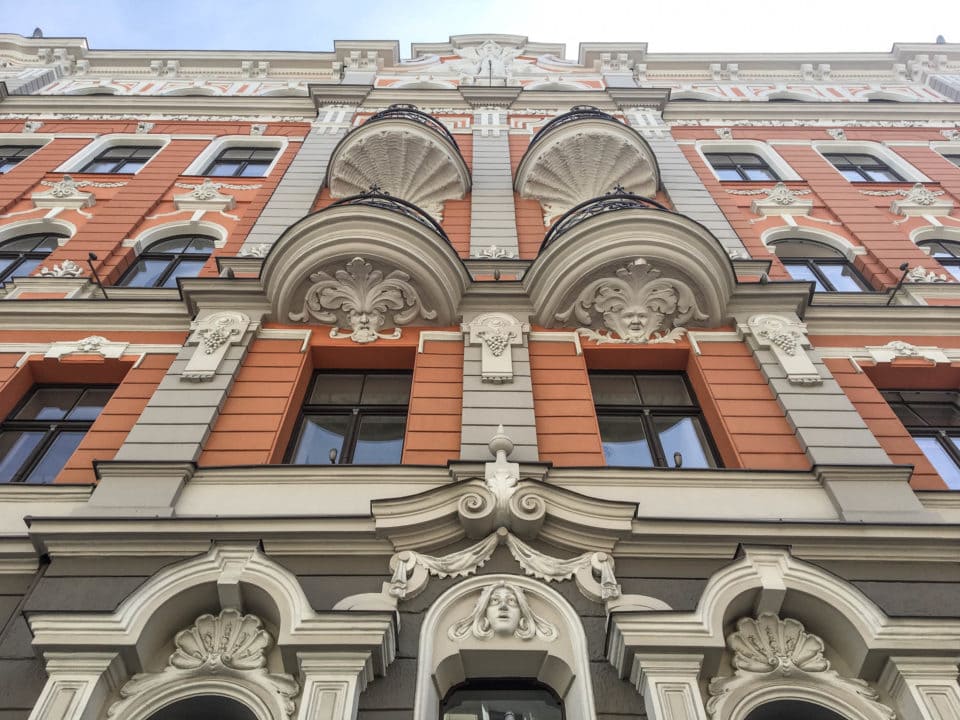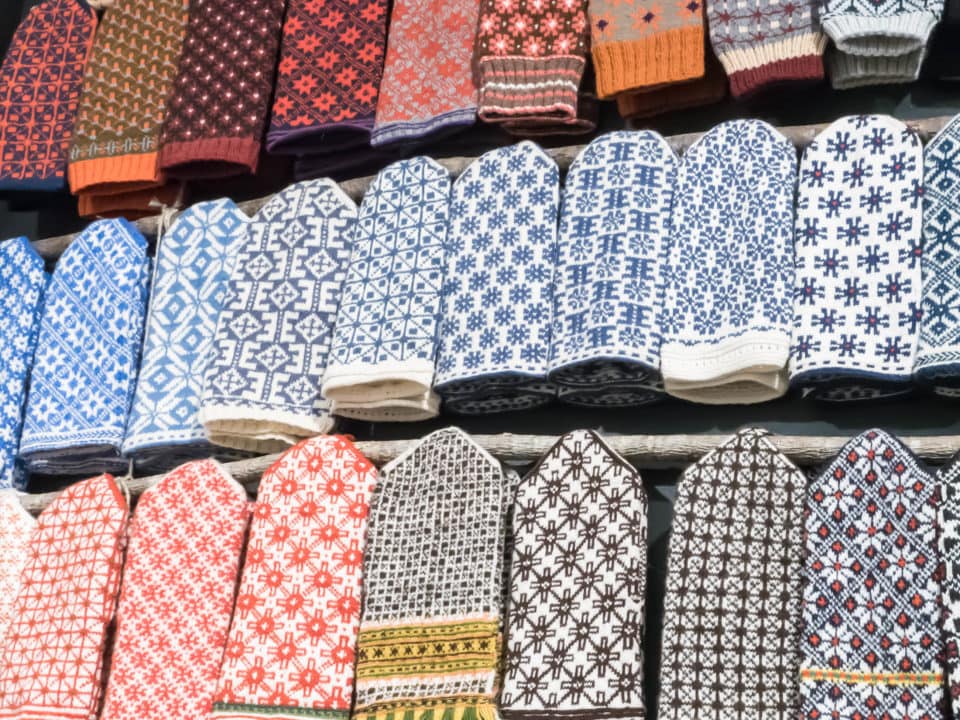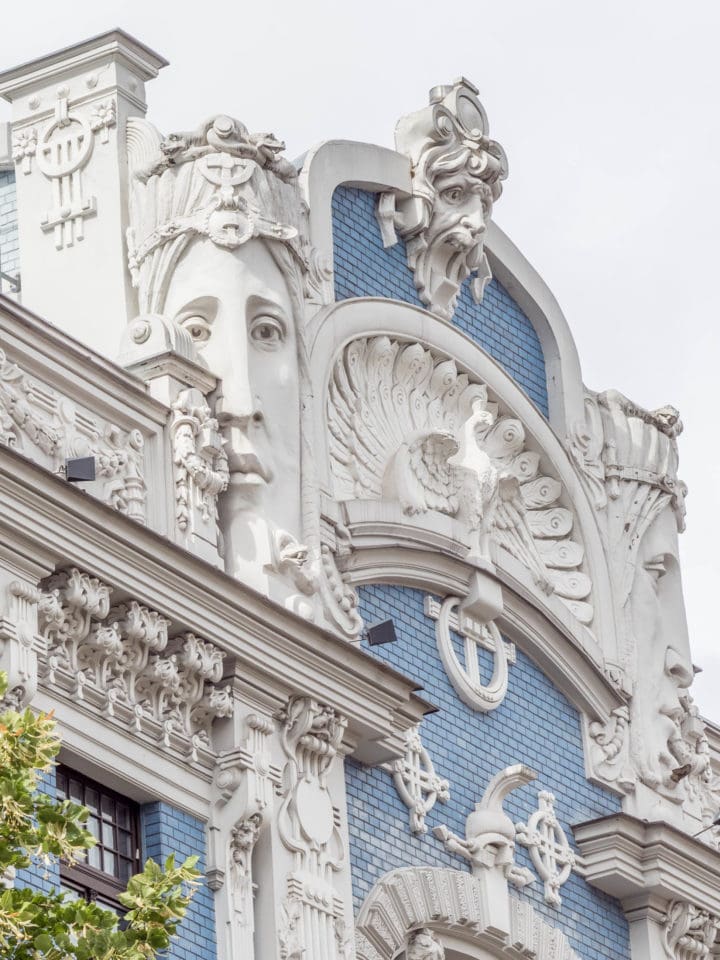After visiting Estonia, we took the bus south to Riga, the capital of Latvia, where we rented an apartment for a week. Riga is a great city for walking around. It has broad avenues, a network of downtown parks that provide shade on hot summer days, and lots of interesting things to look at.
Our favorite part of Riga was the architecture. The city has hundreds of Art Nouveau apartment buildings built between 1900 and 1914—some streamlined and spare, some incredibly ornate, each one individual. Riga is the opposite of cities like Paris that have a uniform look architecturally. Here, each building is distinct. As we strolled through the city, we spent a lot of time looking up, trying to pick out all of the interesting little details on the facades.
An apartment in one of those buildings has been painstakingly restored and turned into the Art Nouveau Museum. It’s filled with the sorts of furniture and decorative objects that a wealthy family who wanted the latest styles would have had in the early 1900s. Many of those objects were made in Riga, which was a major industrial center at the time, and one of the largest cities in the Tsarist Russian Empire.
At the museum, scrolling through pictures of Riga’s major Art Nouveau buildings, we discovered that the place we were staying was one of them! The exterior of our building is still pretty, but the inside has been modified over the years, not least by a rickety Soviet-era metal elevator plunked into the middle of the curving staircase. There are a few fading Art Nouveau touches in the entryway. Every time we went in or out, I couldn’t help thinking about our building in its heyday, when it and its neighbors were on the cutting edge of style in a growing city.

Besides its architecture, Riga has other pluses, as well as some minuses: There’s a vast daily fresh-food market housed in five former Zeppelin hangars. But other than that and a couple of good restaurants we found (Fazenda and Stock Pot), the food wasn’t as tasty and interesting in Riga as in Tallinn. Too many heavy fried foods, pickled vegetables, and beets.
Public transit is abundant and easy to use, though, and internet access is super cheap. (We got one-week SIM cards with unlimited high-speed data for only a few euros.) The shopping is good—lots of linen clothes and colorful knitted mittens—and there’s a great little costume museum that was having a exhibition about fashions of the 1920s. (It was a bit surreal to visit it and hear old American songs like “Putting on the Ritz” somewhere so far from home.)

Compared with Tallinn’s historic old town, Riga’s is less charming and authentic. Although both cities have been trading centers since the early Middle Ages, Riga has far fewer medieval buildings left. The city was heavily shelled during World War II, and some of its most iconic “old” buildings are recent reconstructions that feel a bit Disneyland-ish. The Old Town is less choked with tourists than in Tallinn, but it’s stuffed full of bars and cafes (cheap booze makes Riga a popular destination for partiers). The city does have some pretty church spires, though, and its monuments feel impressively monumental.
Riga offered us some unexpected pleasures. In front of the Lutheran cathedral (not to be confused with the Russian Orthodox cathedral), we stumbled on a display of bear statues from Berlin. Each one was painted by artists from a different country, and together they formed a sort of bear United Nations.

Another day we found a little street-food festival in the up-and-coming Kalnicema district, a neighborhood of restored 19th-century wooden houses. Our dinner there—a cross between fusion tacos and deconstructed Chinese rice-flour buns—was one of the best meals we had in Riga. The people watching was fun too. It felt like the sort of event we’d go to at home.
Although we didn’t know it beforehand, we picked a good year to visit Latvia and Estonia. Both are celebrating the 100-year anniversary of when they first became independent countries. Riga’s National History Museum of Latvia had a good exhibition showcasing the past century of political and social history. We especially like the “period rooms” decorated with Latvian furniture from different decades (the 60s and 70s rooms took me back to my childhood) and the displays of traditional folk costumes from different parts of the country. Recreating traditional clothing for folk and choral festivals has been a way for people to rediscover a sense of “Latvianness” in a country that for centuries was absorbed by its larger neighbors but is now a proud, independent European nation.

